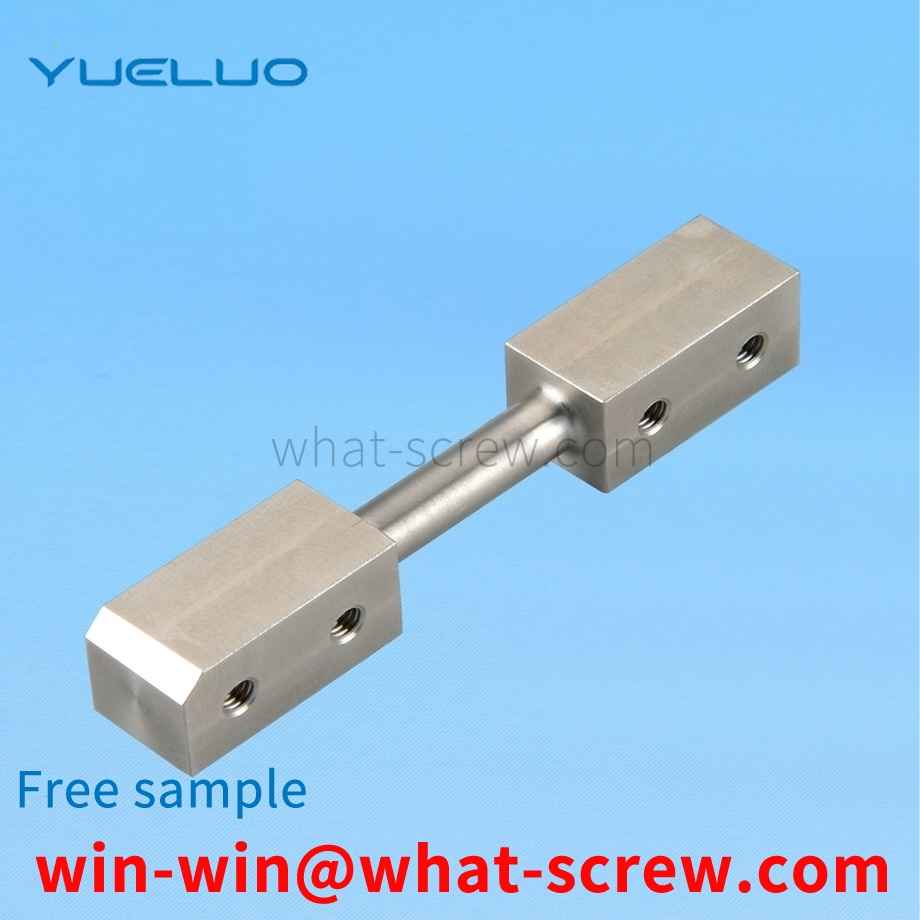The technical problem to be solved by Yueluo is to provide a medical self-locking screw, which can fix the inner screw inside the outer screw, expand the outer screw head through the thimble on the inner screw, and use the outer cone on the inner screw. The body expands, compresses the surrounding bone, and achieves a double locking effect through the self-locking between the internal and external screws; it can hook the surrounding fixed parts when the anti-retraction ring is retracted to achieve the anti-regression effect; effectively prevent false implantation. After a long period of service, the looseness, fretting and other adverse reactions of the body are used to solve the defects caused by the existing technology.
Self-tapping screws were introduced into the industry in large numbers in 1914. The earliest design (essentially imitating a wood screw) was a thread-forming screw made of hardened steel with an A-ended end, mainly used to connect sheet metal channels for heating and ventilation systems. Therefore, it is also called: sheet metal screw. By the end of the 1920s, with the widening of the market and new applications, emphasizing new designs, its application performance was widely improved. The following introduces the four different stages of the development of self-tapping screws in 40 years: thread forming self-tapping screws, thread cutting self-tapping screws, thread rolling self-tapping screws and self-drilling self-tapping screws. 1. Ordinary self-tapping screws (thread forming self-tapping screws) Ordinary self-tapping screws are a direct product of early sheet metal screws. The principle is: when screwing it into a prefabricated hole, the internal thread connected to the screw is formed by the displacement of the material around the hole and the material is pushed into the space between the threads. 2. Self-cutting self-tapping screws (thread cutting self-tapping screws) Because ordinary self-tapping screws are formed only in very thin threads. And it can be easily realized on materials with good toughness. Develop and expand the use of self-tapping screws to thicker sections and harder, brittle and other materials with poor deformability. In this way, the self-cutting self-tapping screw is developed: a cutting groove or cutting edge is machined at the end of the screw shank. When this kind of screw is screwed into the prefabricated hole, the screw acts as a tap and actually cuts out the thread that connects with itself. 3. Self-Extrusion Self-Tapping Screws (Thread Rolled Self-Tapping Screws) In the early 1950s, fastener engineers began to recognize the potential advantages of self-tapping screws as structural rather than just lightly loaded attachments. This has led to the development of a new self-tapping screw thread rolling self-tapping screw (self-extrusion self-tapping screw). According to the design principle of cold forging taps, the thread and end are specially designed for this kind of screw, so that the screw can be formed by applying intermittent and periodic pressure on the crest of its thread instead of on the side of the entire thread. Internal thread for connection. By concentrating and limiting the forming pressure, the pressurized material next to the hole is made to flow more easily and to better fill (squeeze) into the flanks and roots of the thread of the self-tapping screw. Since the frictional resistance of screwing in is much lower than that of ordinary self-tapping screws, threaded rolling self-tapping screws (self-extrusion self-tapping screws) can be screwed into thicker sections. At the same time, it has better screw control and tightening torque, and greatly improves the connection strength and overall firmness. The engineering standard of this kind of self-tapping screw stipulates that the selection of materials, the mechanical properties of heat treatment and the working performance should be strictly controlled. 4. Self-drilling and self-tapping screws (self-drilling screws) People have done statistics: Among the ten expenses that constitute the total assembly cost, the highest one includes the processing of holes. In practical applications of self-tapping screws, prefabricated holes need to be processed. Moreover, in order to make the prefabricated holes have good effect in practical application, the size of these holes must be controlled within a fairly strict range. In the early 1960s, self-drilling and self-tapping screws appeared. A major step forward in reducing assembly costs by eliminating the need to machine prefabricated holes. In general, self-drilling and self-tapping screws realize drilling, tapping and tightening in one operation. These are the four main stages of self-tapping screw design and development. In addition, two newly developed products are also worthy of introduction. Both are screws with a special thread type. One is designed for plastic and other low-strength materials; the other is used in the construction industry to connect cement wall panels, so it is also called wall panel self-tapping screws.
In the installation of the external electrical components of the high-voltage electrical box, generally, the whole aluminum alloy profile with a T-slot is laid on the shell of the high-voltage electrical box, and then the upper nut is placed in the T-slot, and the bottom of the square nut is provided with a spring , When installing the electrical components, align the mounting holes with the screw holes of the square nut, then screw and tighten the screws to achieve the installation of electrical components. The biggest defect in the above installation process is that the alignment of the mounting hole and the screw hole is not very convenient, and the spring at the bottom of the square nut is easy to be missing. Once the spring is missing or damaged, the square nut cannot be effectively positioned in the T-slot. It makes the alignment of the mounting hole and the screw hole more difficult. Third, the above-mentioned connection and fixing method itself is not particularly ideal.
Axle card is a kind of hole-to-hole movement installed on a slotted shaft and used as a fixed component. The inner diameter of this type of retaining ring is slightly smaller than the diameter of the assembly shaft. Application No. 201621153710.9 discloses a shaft card assembly device, including a feeding mechanism, a material distribution mechanism, a material reclaiming mechanism and an assembling mechanism. The feeding mechanism is connected with the feeding mechanism. The reclaiming mechanism includes a reclaiming tool and a servo system for driving the movement of the reclaiming tool. One end of the reclaiming tool is provided with a c-shaped opening, and an incision connected with the c-shaped opening is provided. The assembling mechanism includes a carrier for fixing the parts to be loaded and a turntable, and the carrier is mounted on the turntable. In the above shaft card assembly device, after the feeding mechanism completes the feeding, the material distribution mechanism separates the shaft card to a specific position with a fixed attitude, and then the private server drives the reclaiming tool to clamp the shaft card and assemble it to the pre-fixed by the assembly mechanism. on the fitting. During the assembly process, the manual workload is small, the efficiency is high, and the labor intensity is small. At the same time, the c-shaped opening and the cutout at the end of the reclaiming tool are designed to effectively form an elastic force to clamp the clamping shaft card and absorb the assembly process. The resulting outward deformation force avoids the plastic deformation of the shaft card due to the large external force.
Lock nut is a kind of nut widely used in machinery and other industries. Its working principle is self-locking by the friction between the nut and the bolt. However, the reliability of this self-locking is reduced under dynamic loads. In some important occasions, we will take some anti-loosening measures to ensure the reliability of the nut locking.
We have many years of experience in the production and sales of screws, nuts, flat washers, etc. The main products are: crown washers, large washers, GBT801 screws, self-produced screws and other products, we can provide you with suitable fasteners solution.



















 Service Hotline
Service Hotline




